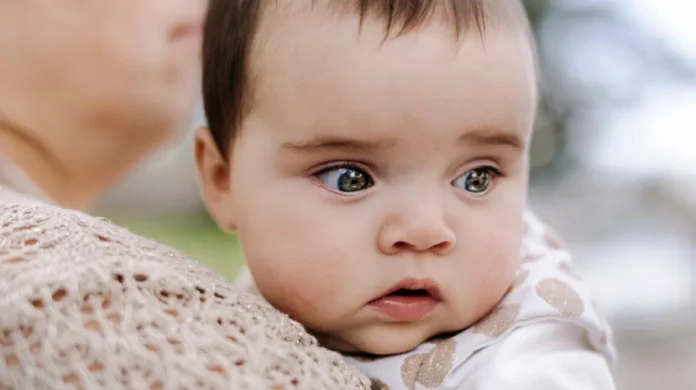When Does a Baby’s Eye Color Change
One of the most exciting things for new parents is seeing what their baby will look like. Eye color is one of the most noticeable and intriguing features that parents look for in their newborns. While it’s true that babies are born with a certain eye color, it’s also true that their eye color can change over time.
So, when does a baby’s eye color change? The answer is not as simple as you might think. Eye color is determined by the amount and type of pigment in the iris, which can be influenced by a variety of factors, including genetics and exposure to light. While it’s impossible to predict exactly when a baby’s eye color will change, there are some general guidelines that can help parents understand what to expect.
In this article, we’ll take a closer look at the science behind eye color and explore some of the factors that can influence when and how a baby’s eye color changes. We’ll also provide some tips for parents who are curious about what their baby’s eye color might look like in the future. Whether you’re a first-time parent or a seasoned pro, understanding the science behind eye color can help you appreciate the unique features of your little one’s appearance.
Genetics of Eye Color
Eye color is determined by genetics. It is a combination of pigments produced in the stroma of the iris. Brown eyes have more melanin than green or hazel eyes. Blue eyes have very little pigment. The mix of genes inherited from each parent determines which pigments are produced and the baby’s eye color.
The genetics of eye color is complex, and there are many genes involved. However, the most important gene is OCA2, which is responsible for producing melanin. There are two forms of OCA2: one produces a lot of melanin, and the other produces less. If a person inherits two copies of the gene that produces a lot of melanin, they will have brown eyes. If they inherit two copies of the gene that produces less melanin, they will have blue eyes.
However, most people inherit one copy of each form of the gene, which means that their eye color will be somewhere in between brown and blue. This is why green and hazel eyes are less common than brown or blue eyes.
The inheritance of eye color is also influenced by other genes, such as HERC2 and SLC24A4. These genes are involved in the production and transport of melanin, and variations in these genes can affect eye color.
When Does Eye Color Develop?
Eye color is a fascinating topic and many parents wonder when their baby’s eye color will develop. Eye color is determined by the amount and type of pigments in the iris of the eye. At birth, most babies have blue or gray eyes. This is because the melanin, the pigment that gives color to the eyes, hasn’t fully developed yet.
It can take up to six months for a baby’s eyes to settle on a permanent color. During this time, the amount of melanin in the iris increases and can change the color of the eyes. The final color of a baby’s eyes is usually determined by the time they are nine months old.
Eye color is inherited from the parents, but it’s not always straightforward. The genetics of eye color are complex, and it’s possible for a child to have a different eye color than both parents. For example, if one parent has brown eyes and the other has blue eyes, the child may have green or hazel eyes.
Factors That Affect Eye Color Change
Eye color change in babies is a fascinating process. It is influenced by various factors, including genetics and melanin. Here are some of the key factors that affect eye color change:
- Genetics: Genes inherited from parents play a significant role in determining the eye color of a baby. The dominant and recessive genes passed down from parents will determine the amount of melanin in the baby’s eyes.
- Melanin: Melanin is a pigment that determines the color of the eyes, skin, and hair. It is produced by melanocytes, which are cells found in the iris. The amount of melanin in the iris determines the eye color of a baby.
- Light exposure: Light exposure can also affect the amount of melanin produced in the iris. The more exposure to light, the more melanin is produced, resulting in darker eye color.
- Ethnicity: Ethnicity can also influence the eye color of a baby. For instance, babies of Black, Indigenous, and People of Color (BIPOC) are likely to have brown eyes at birth, while Caucasian newborns are likely to have dark blue or gray eyes.
- Age: Eye color change in babies is not instantaneous. It can take up to a year for the eyes to settle on a permanent color. During this time, the eyes may change color due to the factors mentioned above.
It is important to note that eye color change in babies is not an exact science. While genetics and melanin play a significant role, other factors can influence the process. It is also not a guarantee that a baby’s eye color will change. Some babies are born with their permanent eye color, while others experience minimal changes.
Predicting Eye Color in Infants
Eye color is determined by the amount of melanin in the iris of the eye. Melanin is a pigment that is produced by specialized cells called melanocytes. The more melanin a baby produces, the darker their eyes will be. Conversely, the less melanin a baby produces, the lighter their eyes will be. However, predicting a baby’s eye color can be difficult as it is determined by multiple genes.
While it is not possible to predict a baby’s exact eye color, there are some general guidelines that can help parents make an educated guess:
- Most babies are born with blue or gray eyes, regardless of what color their parents’ eyes are.
- By the time a baby is 6 months old, their eye color will usually stabilize and remain the same for the rest of their life.
- If both parents have brown eyes, it is very likely that their baby will also have brown eyes.
- If both parents have blue eyes, it is still possible for their baby to have brown eyes if they carry the gene for brown eyes.
- If one parent has brown eyes and the other has blue eyes, it is difficult to predict what color their baby’s eyes will be. However, there is a higher chance that their baby will have brown eyes.
It is important to keep in mind that these guidelines are not foolproof and there is always a chance that a baby’s eye color may surprise their parents. Ultimately, the best way to predict a baby’s eye color is to wait and see!
Conclusion
Eye color is determined by the amount and type of melanin in the iris. At birth, babies have little melanin, which is why their eyes appear blue or gray. As melanin production increases over the first year of life, a baby’s eye color may change to brown, hazel, green, or a darker shade of blue or gray.
While most babies’ eye color will stabilize by the time they are 6-9 months old, some children may continue to experience changes in their eye color up to the age of 3 years old. It is important to remember that predicting a baby’s final eye color is not an exact science, as many factors can influence the amount and type of melanin produced.
If you are curious about your baby’s eye color, the best thing to do is to wait and see. Enjoy watching your baby grow and develop, and appreciate the unique beauty of their eyes, no matter what color they are!
Also Read:
How Long Is Pink Eye Contagious





















